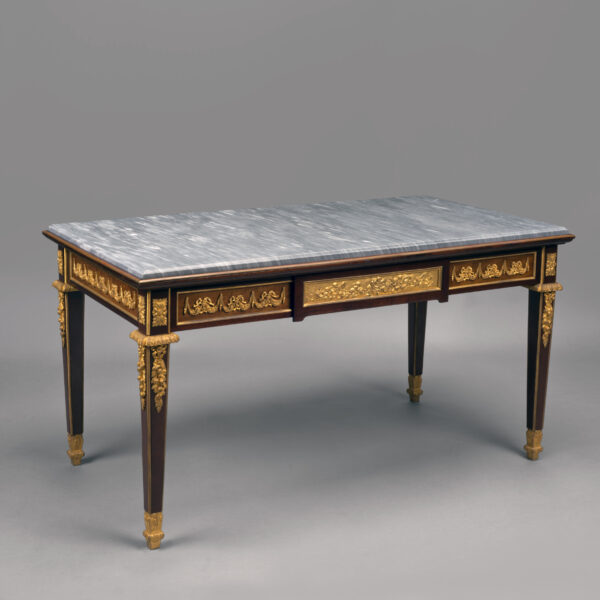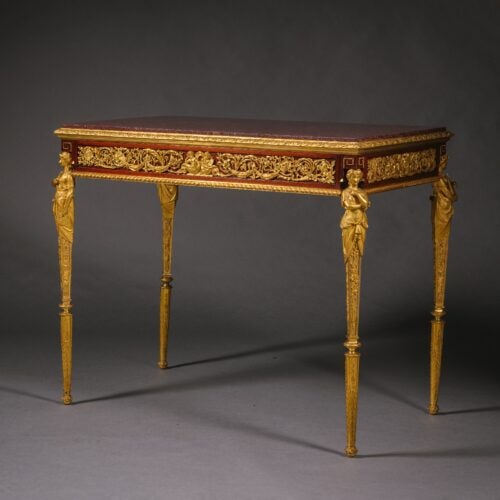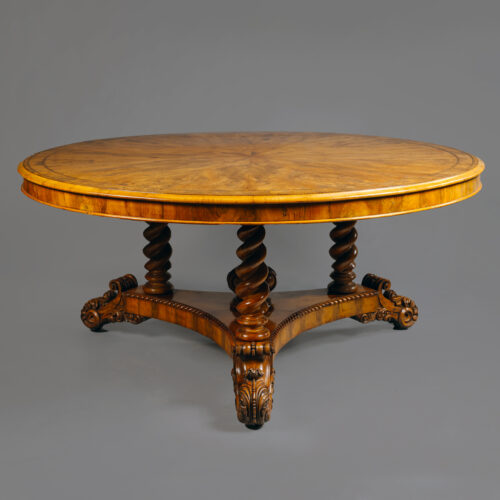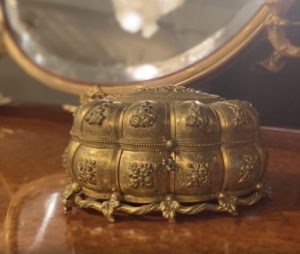Attributed to Michelangelo Barberi (1787-1867)
A Rare and Important Micromosaic Inlaid Marble and Giltwood Centre Table
POA
A Rare and Important Micromosaic Inlaid Marble and Giltwood Centre Table. Attributed to Michelangelo Barberi, Rome. The circular top with a border...
ابعاد
Height: 97 cm (39 in)Diameter: 107 cm (43 in)
وصف
A Rare and Important Micromosaic Inlaid Marble and Giltwood Centre Table.
Attributed to Michelangelo Barberi, Rome.
The circular top with a border of black marble inlaid with red marble stringing and encircling oval vignettes of Roman monuments comprising the Roman Forum, the Pyramid of Caius Cestius at the Non-Catholic Cemetery, the Pantheon, the Forum Boarium with the Fountain of the Tritons, the Colosseum, the Temple of Sibyl at Tivoli, the Twin Santa Maria Churches in the Piazza di Popolo and the Tomb of Caecilia Metella. At the centre is a circular view of St. Peter’s within a black marble band and surrounded by four roundels depicting a lion, two dolphins, a peacock perched on a cloud and an eagle holding a lightning bolt. These represent the classical elements of earth, water, air and fire. They are interspersed with rounds of flowers. The red marble ground is Finnish Red Quartzite which was famously used for Napoleon’s sarcophagus at Les Invalides. The giltwood base has four legs carved with griffins and terminating in lion-paw feet, joined by a scrolled stretcher with central platform carved with an exotic bird.
Italy, Circa 1850.
The art of mosaic reached its highpoint in Rome during the nineteenth century. Mosaicists had been drawn to Rome from Venice in the sixteenth century to undertake the decoration of St. Peter’s Basilica. By the end of the eighteenth century the Vatican Mosaic Workshops had perfected the process to such a degree that strands of glass could be heated with an oil lamp and drawn out into stands as thin as a hair. These strands could be made in a limitless palette of colours, and cut into miniscule tesserae called smalti. These minute tiles would be handled with pincers, like those with which diamonds are taken up, and placed into a marble or metal tray filled with plaster. Once positioned the surfaces is polished and filled between with coloured wax. These minutely detailed mosaics have been termed micromosaics, and in the design of table tops, views of Rome, flora and fauna and classical iconography are popular. The micromosaic panels are often surrounded by marble, as in the present example. Most desirable in the subject of micromosaics are the Italian monuments which are magnificently executed on this table top. Their popularity grew out of the Grand Tour as promoted by the engravings of Piranesi, but large-scale panels executed in micromosaic, such as views of the Roman Forum and of St. Peter’s Square, or table tops such as this, are truly exceptional and were only within reach of the wealthiest collectors.
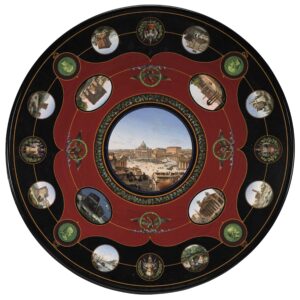
A related table top by Barberi. (Private Collection)
تاريخ
حوالي عام 1850
أصل
Italy
Michelangelo Barberi (1787-1867) known as ‘Cavaliere’ is considered the pre-eminent mosaicist of the mid-19th century, revered internationally for the ‘truth of perspective, the rich tone of colour and the perfect finish’ to be found in the microscopic nuances of his mosaic masterpieces. Michelangelo Barberi’s brothers were painters, and his father Camillo was an architect, painter and designer. Camillo served as Director of Fortifications and Prisons for Italy following his meeting with the Emperor Napoleon in Milan in 1804. The family lived in Paris for a while where they resided with the Piranesi family, before returning to Rome during the reign of Pius VII (1800-1823).
Michelangelo was apprenticed to the mosaicist Cesare Aguatti and worked from 1820 in the Vatican Workshop. From the 1820s his table tops were in demand by European nobility and he set up shop at 148 Via Rasella near Piazza di Spagna where his daughter later ran the business. He published ‘Alcuni Musaici usciti dallo studio del Cav. Michel’angelo Barberi’ in 1856. The Barberi shop also produced smaller mosaics illustrating literary subjects from Dante, Tasso and Manzoni. Barberi executed views of Rome for the villa of Prince Demidoff (1813-1870) in Florence. By 1856 he had been elected a member of the prestigious Institution of Virtuosos at the Pantheon and was named Commander of the Order of St. Sylvester by Pius IX.
Barberi eventually left Rome for Moscow where he received commissions from Princess Volkonski, later opening his Roman workshop under her patronage. On a subsequent return journey to Russia, he was received by Tsar Nicholas I who asked him to assist in setting up a school of micromosaic artists based on that in the Vatican (A. Gabino et al., Roman Mosaic: l’Arte del Micromosaico fra ‘700 e ‘800, Rome, 2001, p. 186). In 1847 the Tsar had placed a number of Russian pupils in Barberi’s Vatican studio to learn the art of mosaic with a view to founding a school of mosaic in St. Petersburg. One of Barberi’s pupils, Antonovich Bruni (1801-1874) became director of the St. Petersburg Mosaic School in 1866.
In 1851, Barberi participated in the Crystal Palace Great Exhibition where he received the only gold medal awarded to the Papal state for his mosaic table The Beautiful Sky of Italy, an example of a composition he had already executed for Tsar Nicholas I to commemorate his tour of tour Italy in 1845, visiting Genoa, Milan, Venice, Florence, Rome, Naples and Palermo. The table exhibited in London in 1851 was commissioned by Francis Needham, Earl of Kilmorey (1787-1880) and is today in The Rosalinde and Arthur Gilbert Collection on loan to the Victoria and Albert Museum, London (LOAN:GILBERT.894:1, 2-2008). A description of that table testifies to Barberi’s mastery as a mosaicist: “The rich tone of colour, the accuracy of delineation, and the perfect finish that were found in this admirable work, could not have been surpassed by the delicacy of miniature oil painting; so great, indeed, was its perfection, that the spectator might almost have required a microscopic examination to satisfy himself that the work of art before him was not the production of pencil and pigments, but of materials widely different.” At the 1851 Exhibition Chevalier Barberi is referred to as ‘a name of European celebrity’ and complimented for “improvements in the mechanical parts of the operation of mosaic painting which have been introduced by Barberi are so great, that a work which would require upwards of four years for its completion in the Vatican studio, can now be executed by him in less than a year and a half” (William Gaspey, ‘The great exhibition of the world’s industry held in London in 1851’, Volume II. p. 182-184).
Literature:
Alcuni Musaici usciti dallo Studio del Cav. Michel’Angelo Barberi, 1856.
A. Gonzales-Palacios, S. Röttgen et al., The Art of Mosaics, Selections from the Gilbert Collection, 1982, p. 186.
Jeanette Hanisee Gabriel, The Gilbert Collection Micromosaics, London, 2000. pp. 281-282.
Alcuni Musaici usciti dallo Studio del Cav. Michel’Angelo Barberi, 1856.
A. Gonzales-Palacios, S. Röttgen et al., The Art of Mosaics, Selections from the Gilbert Collection, 1982, p. 186.
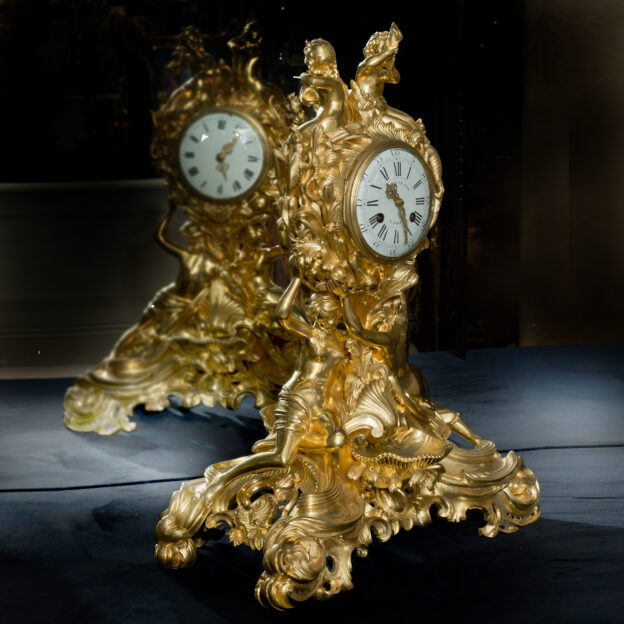




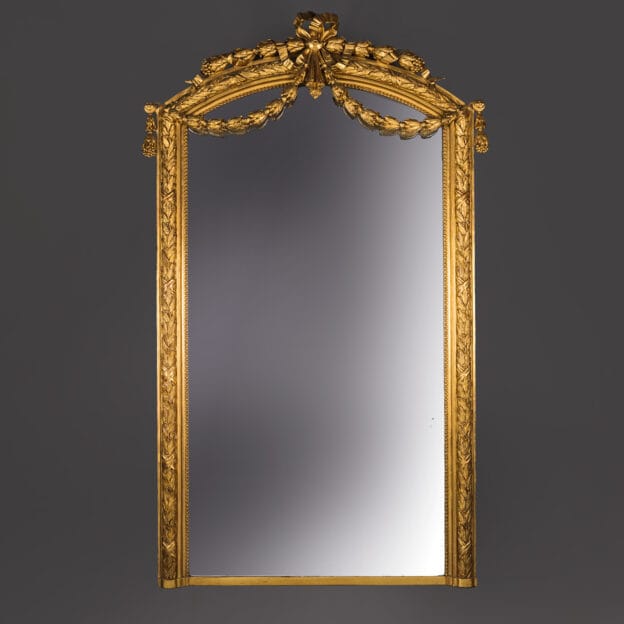
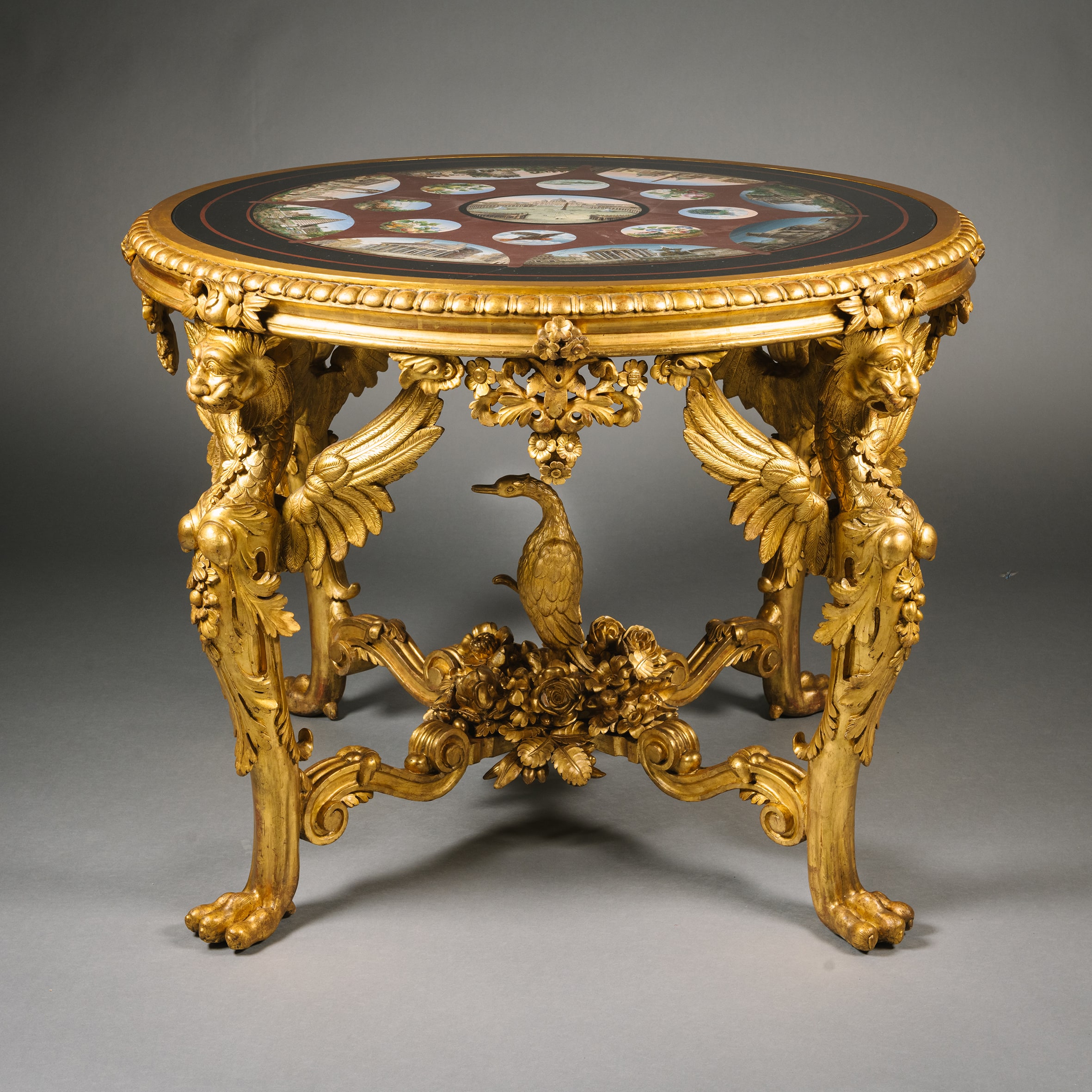
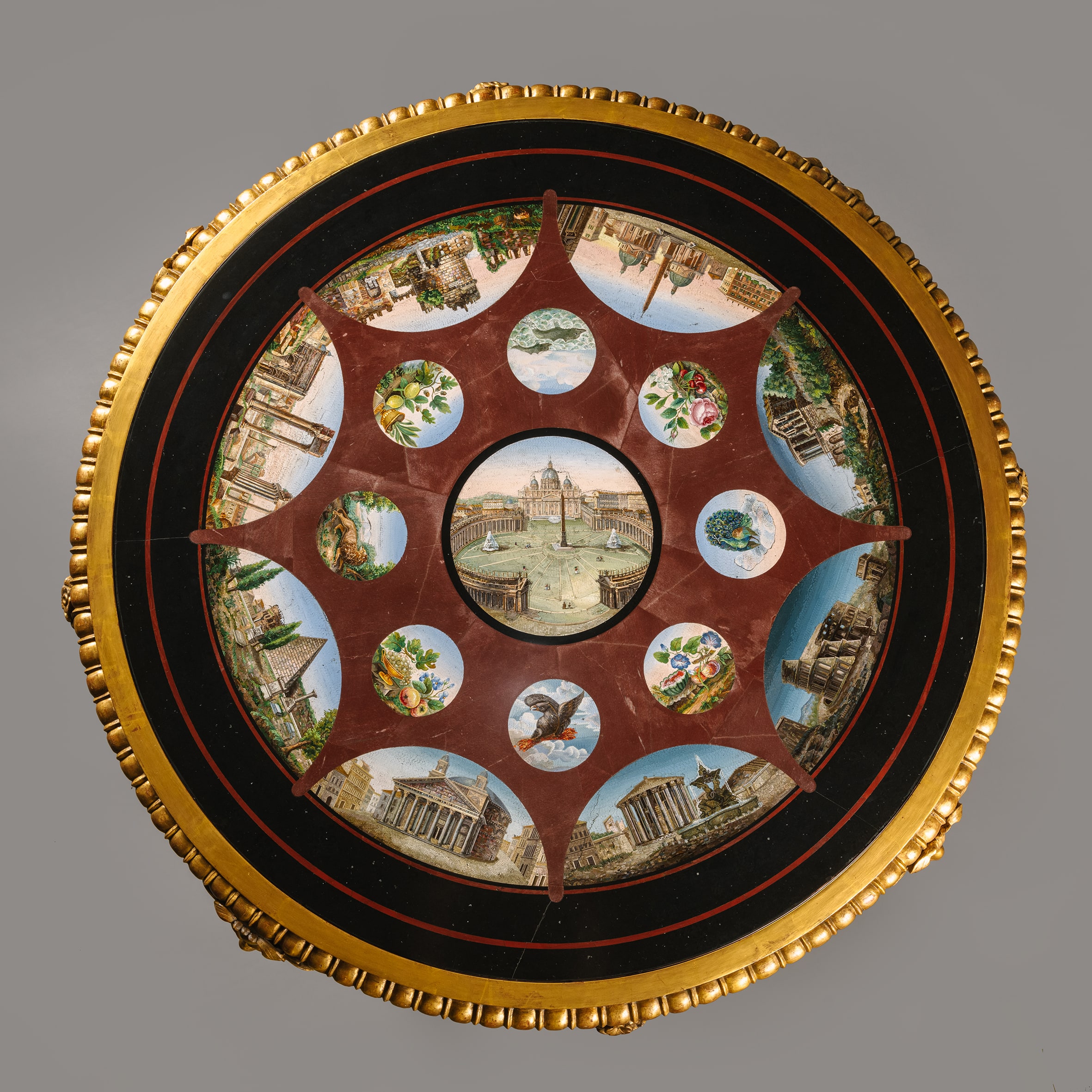
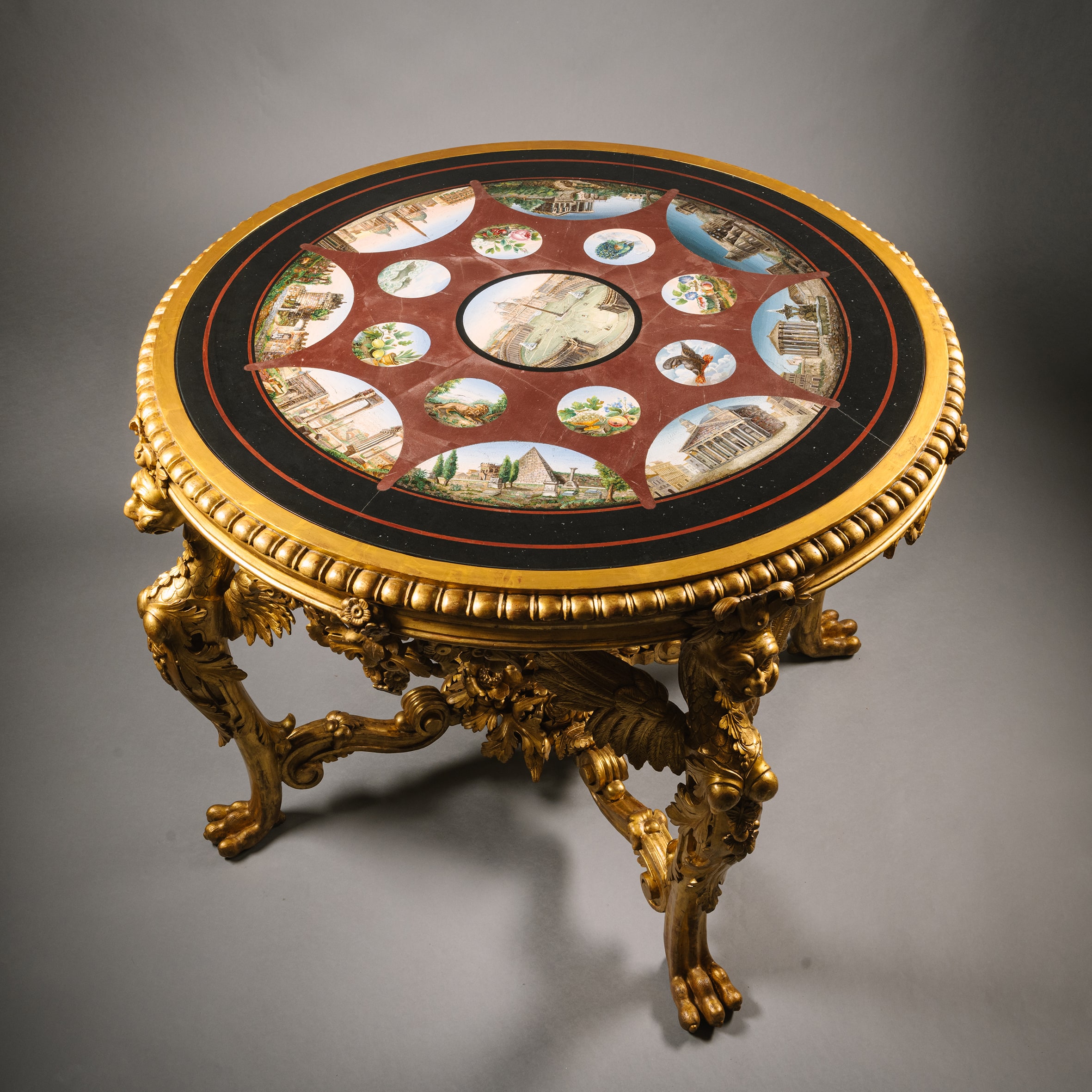
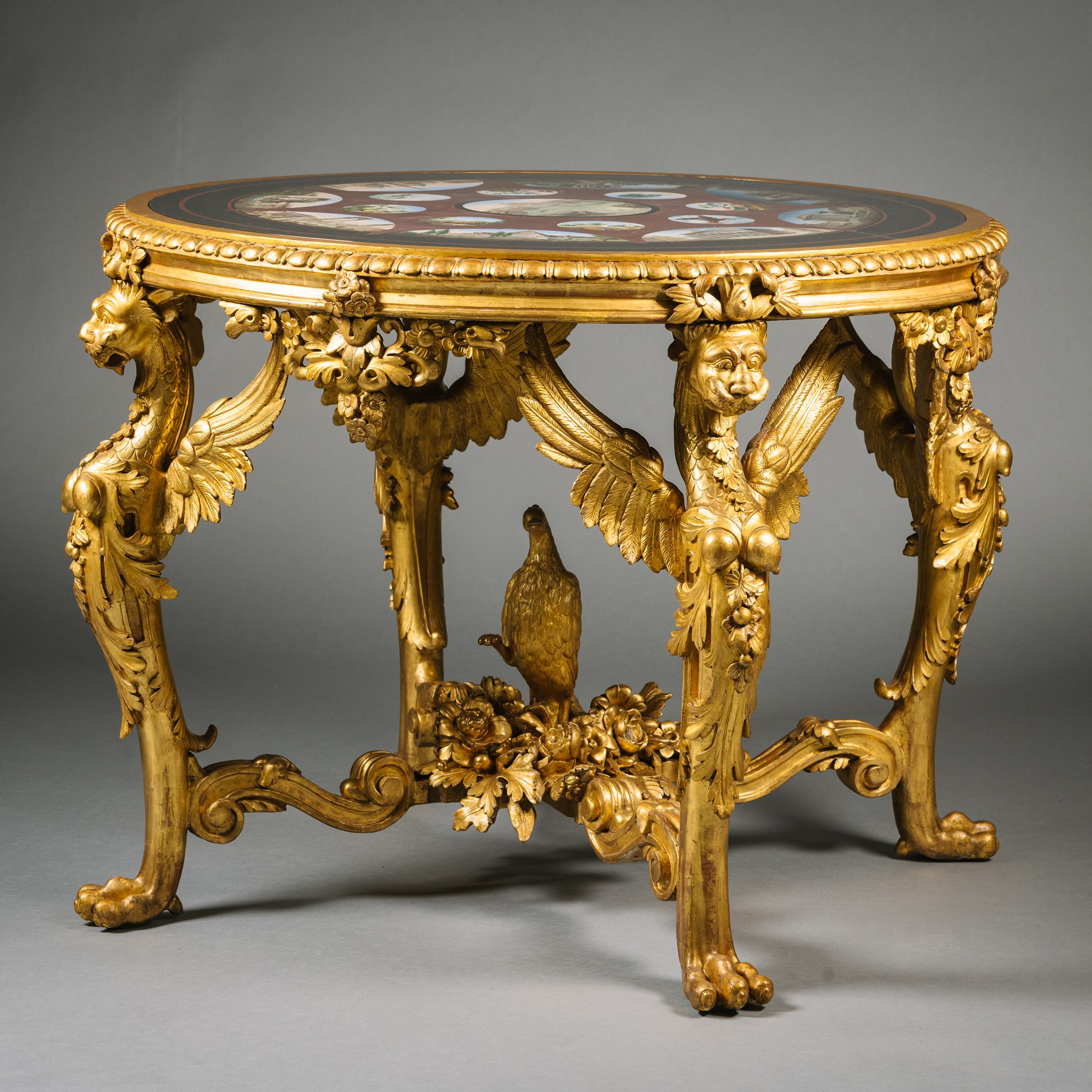
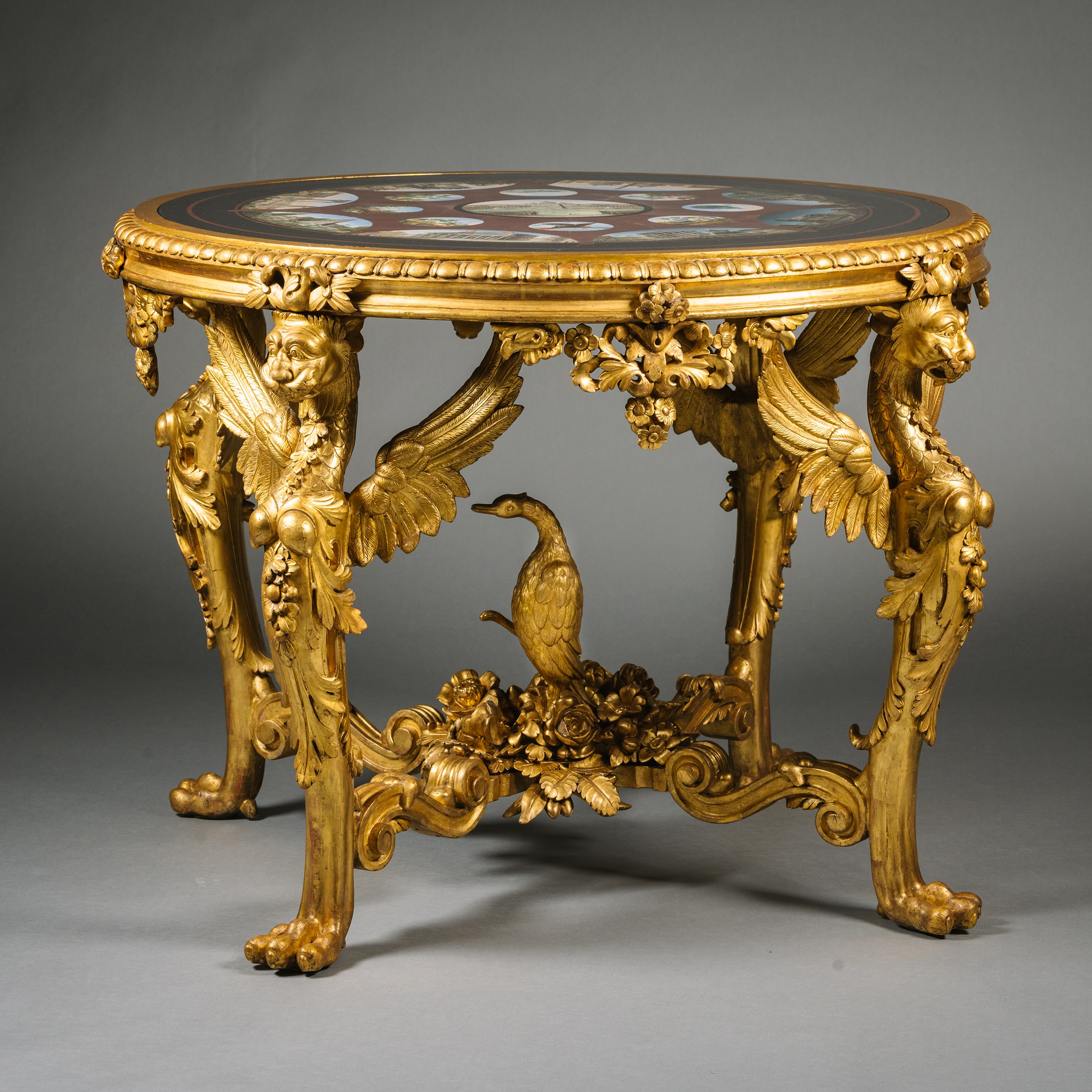
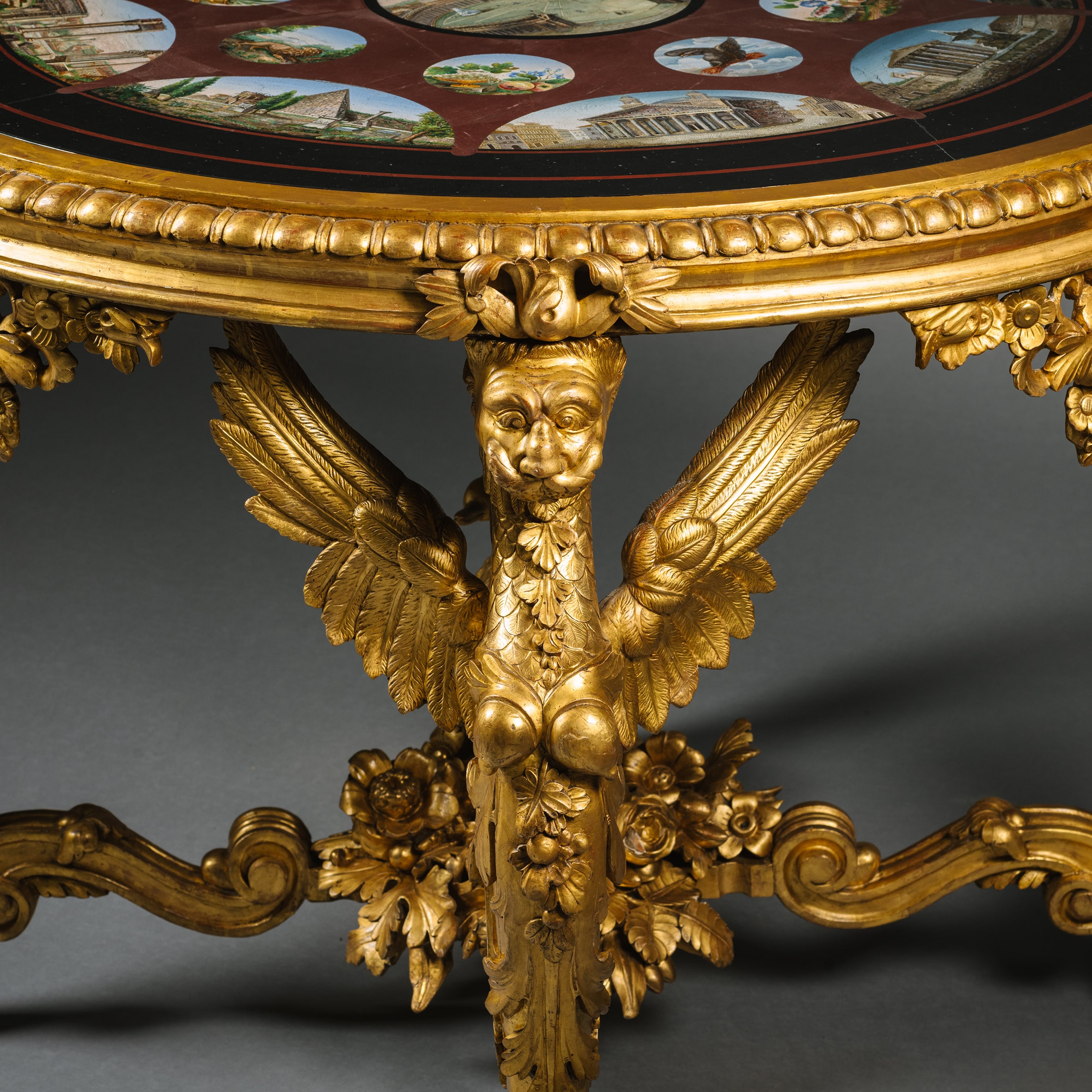
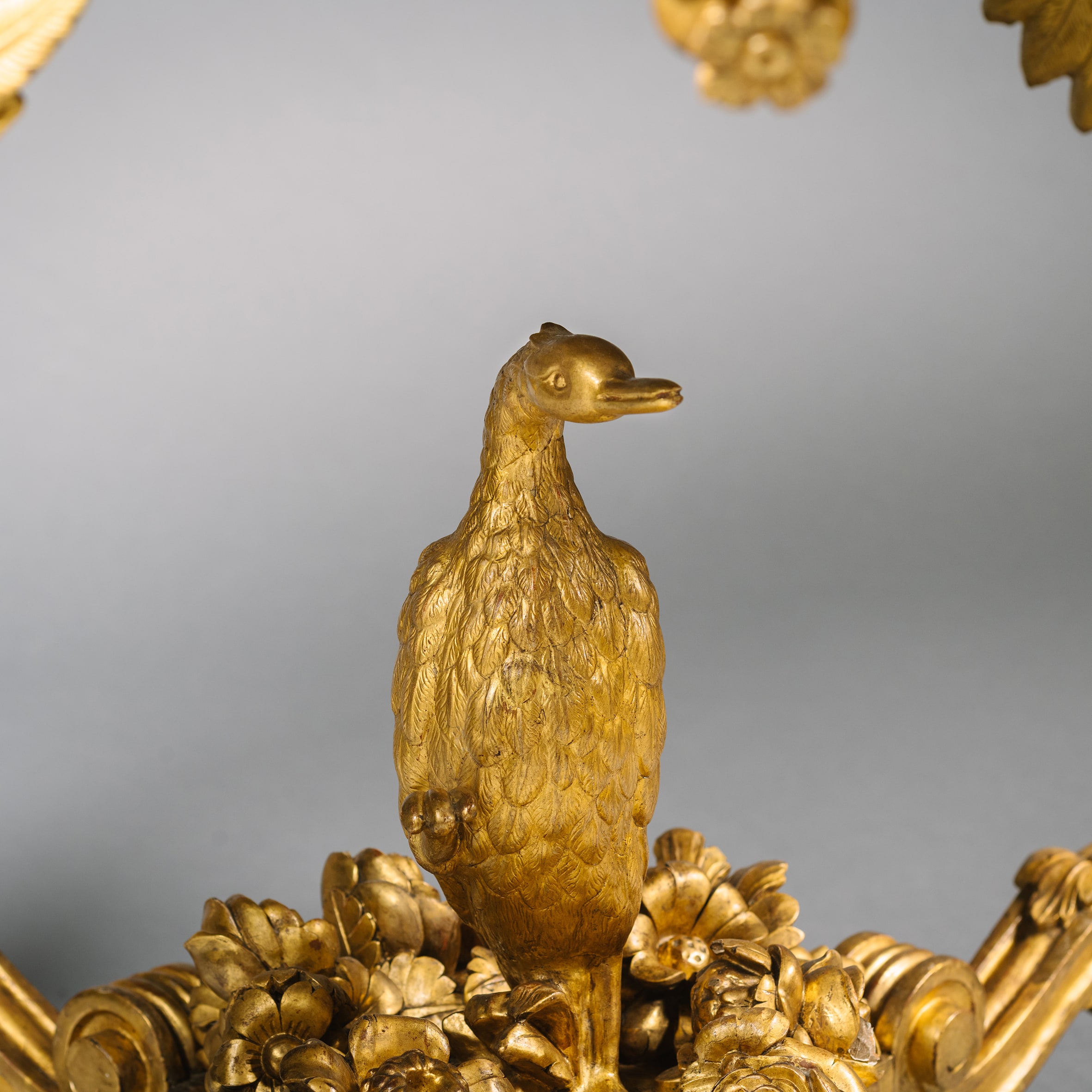
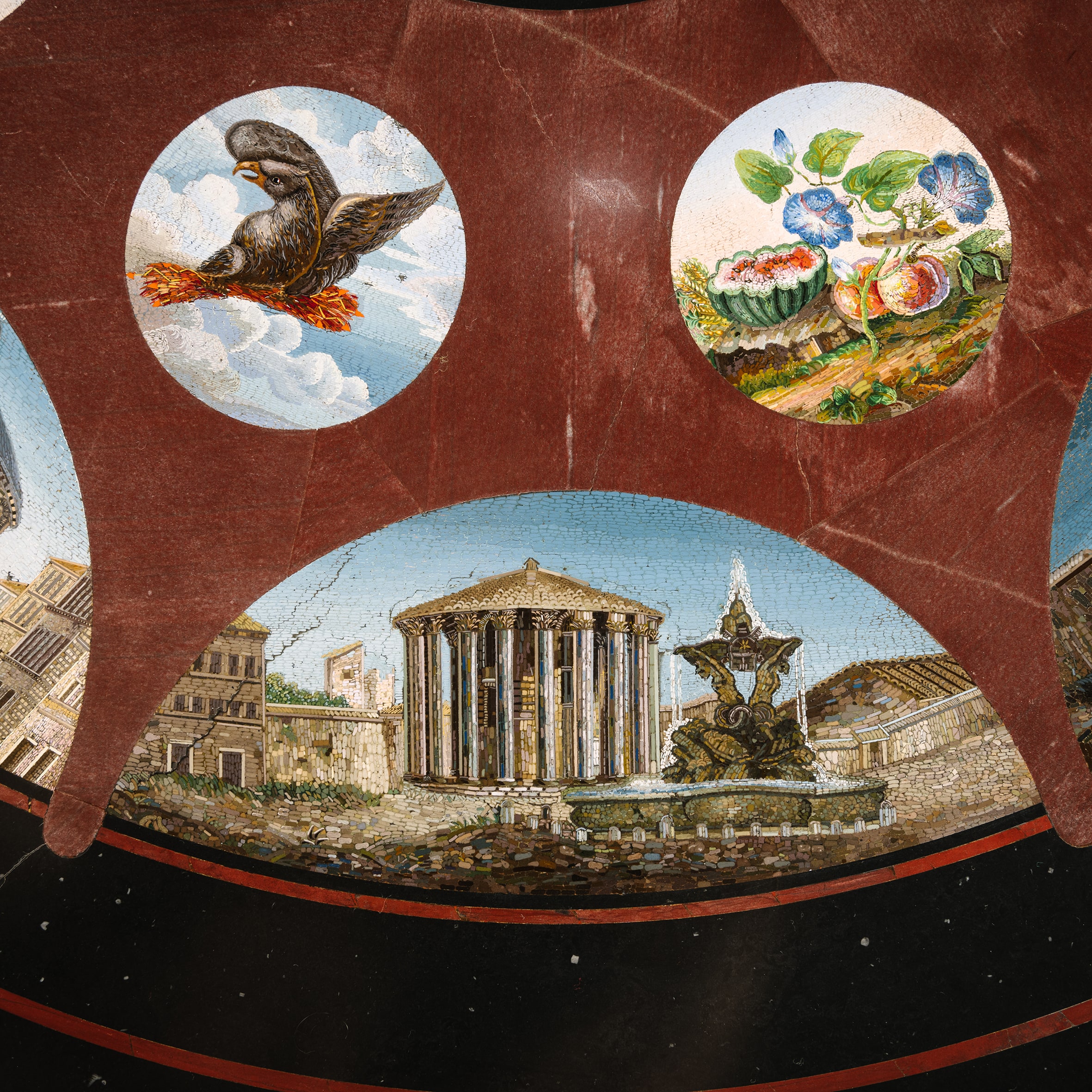
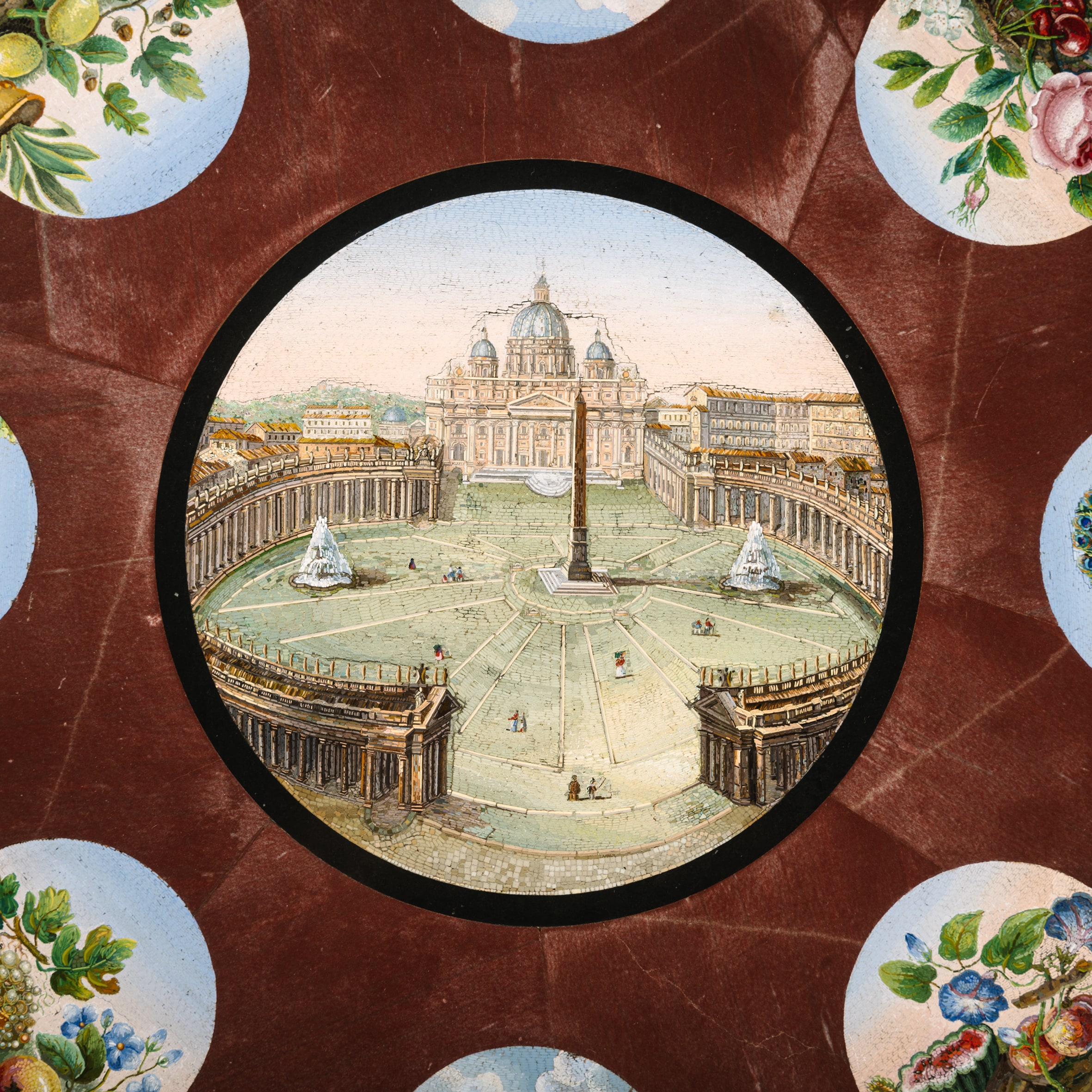
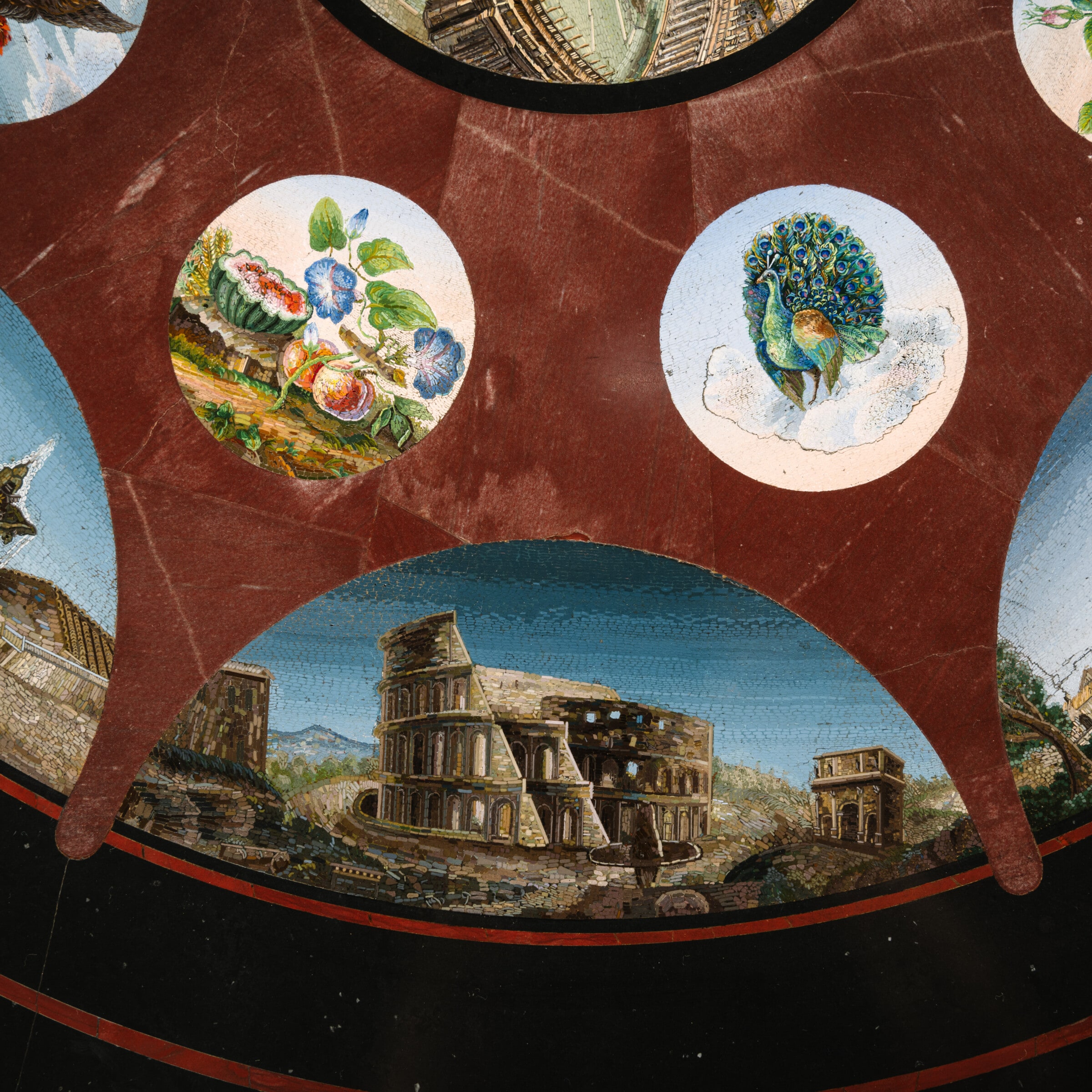
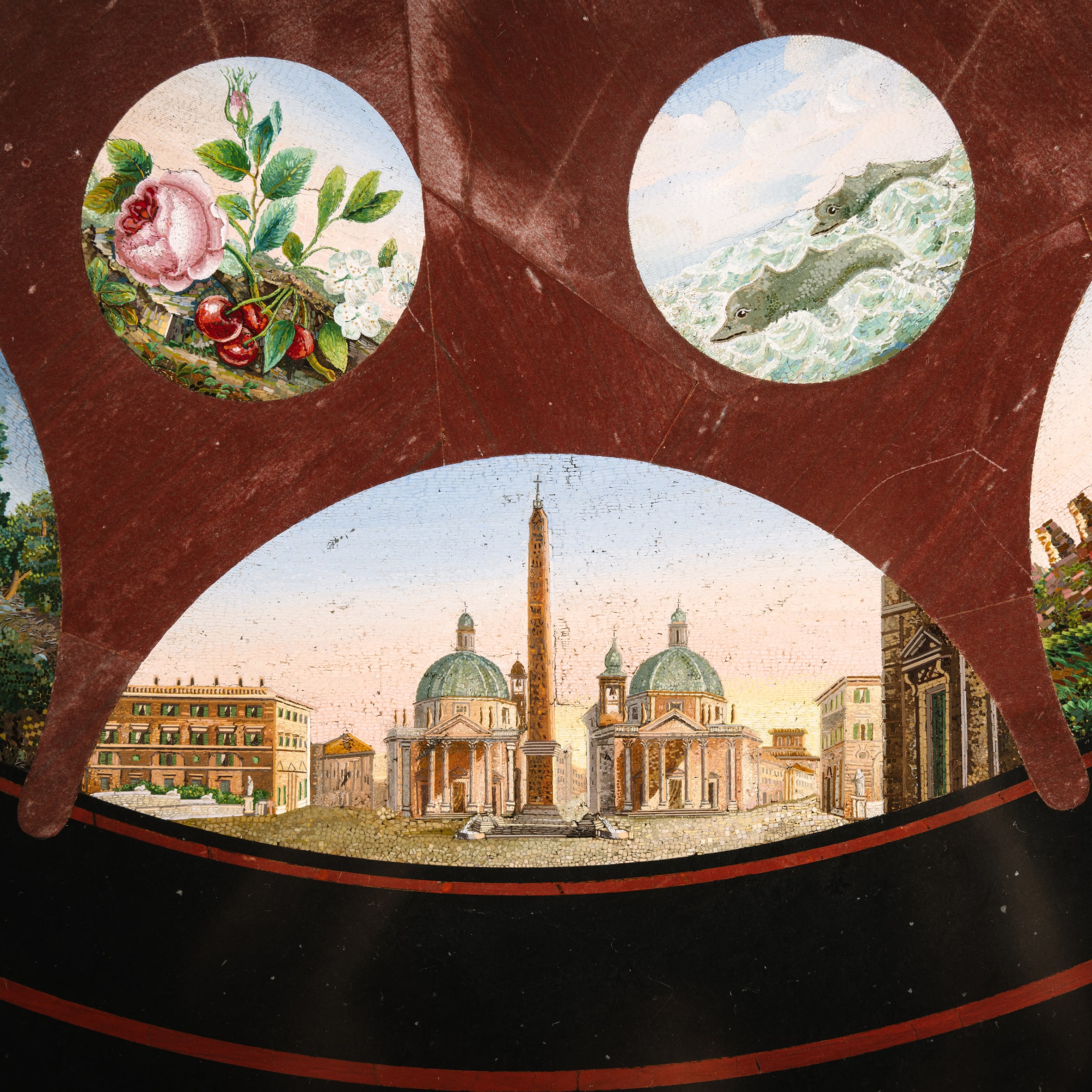
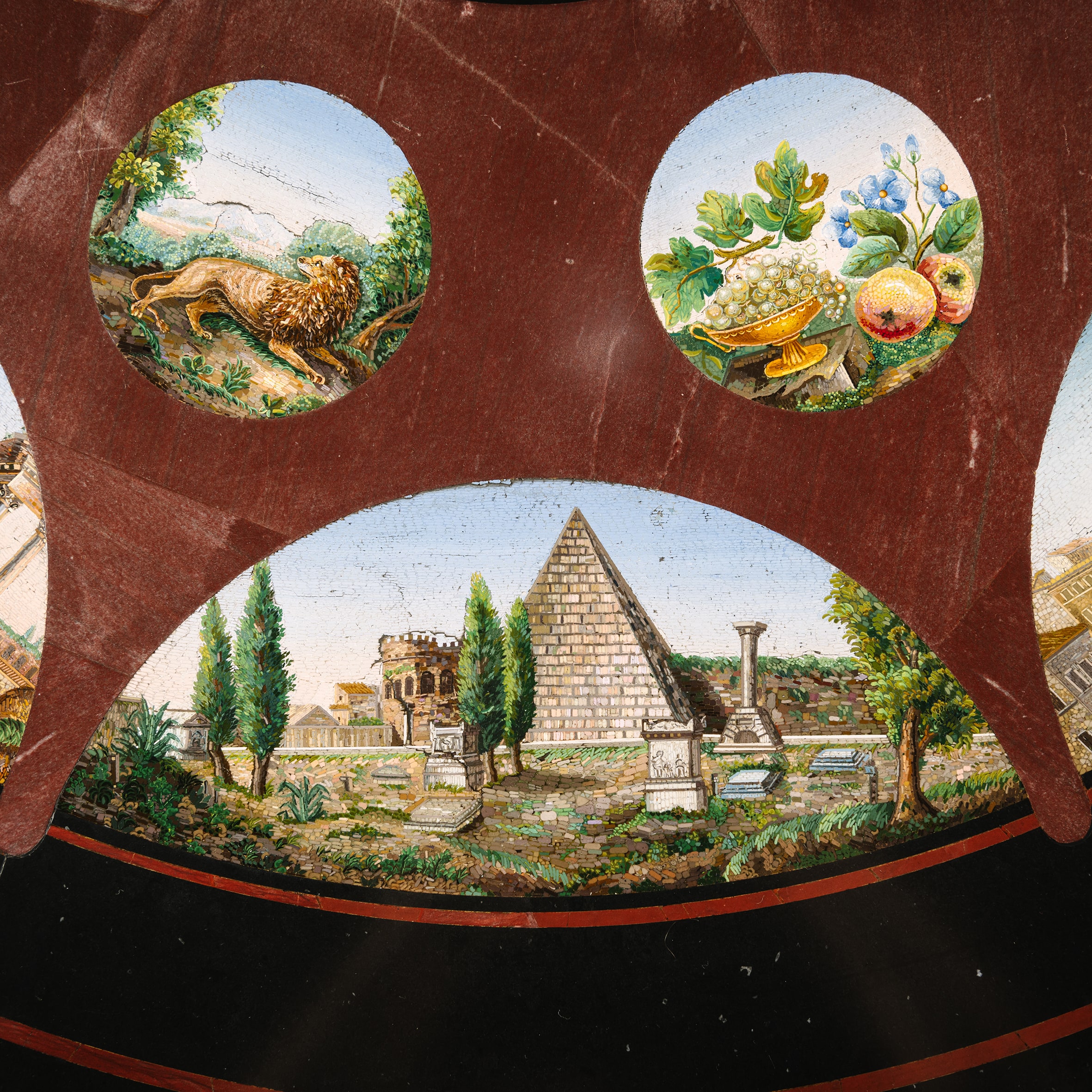
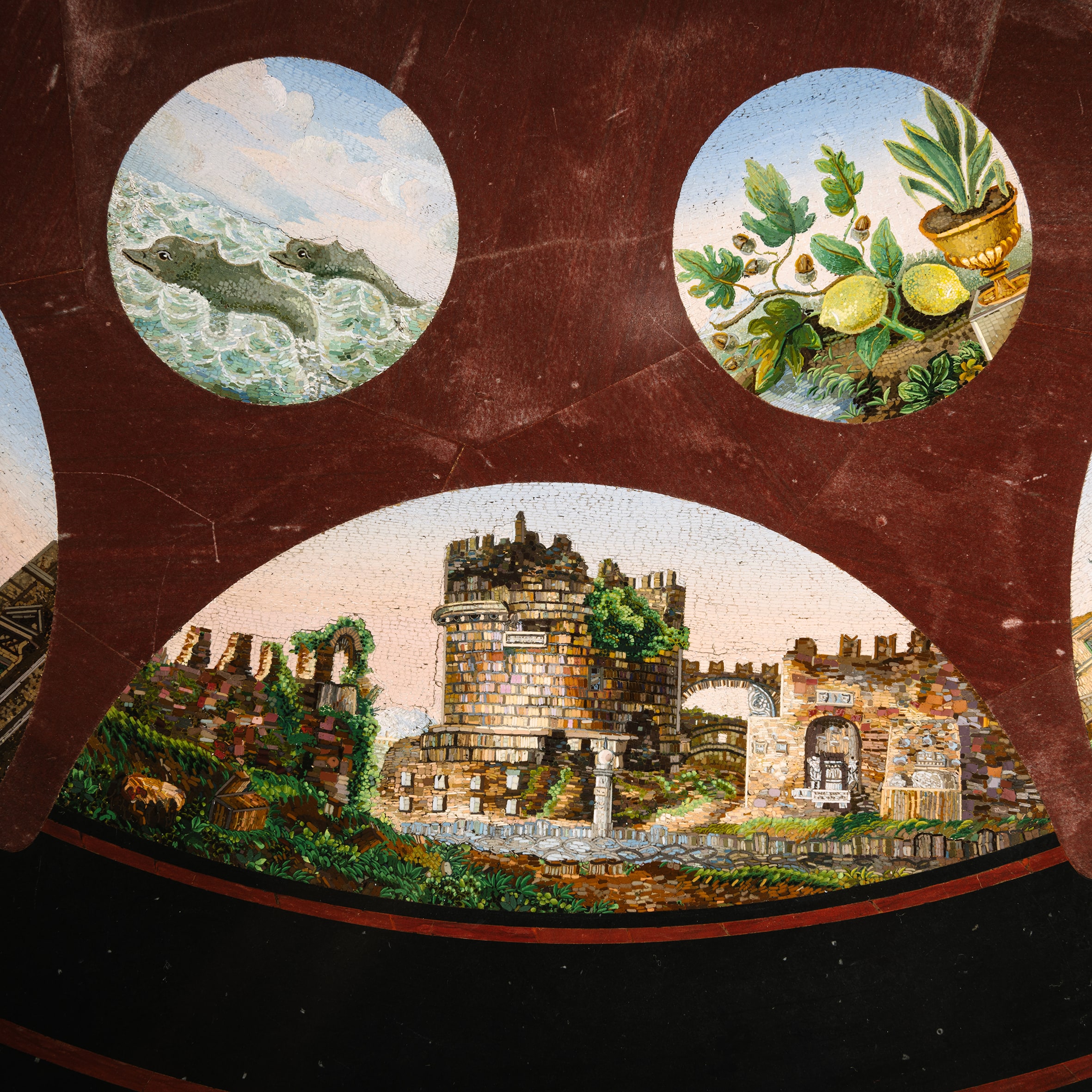
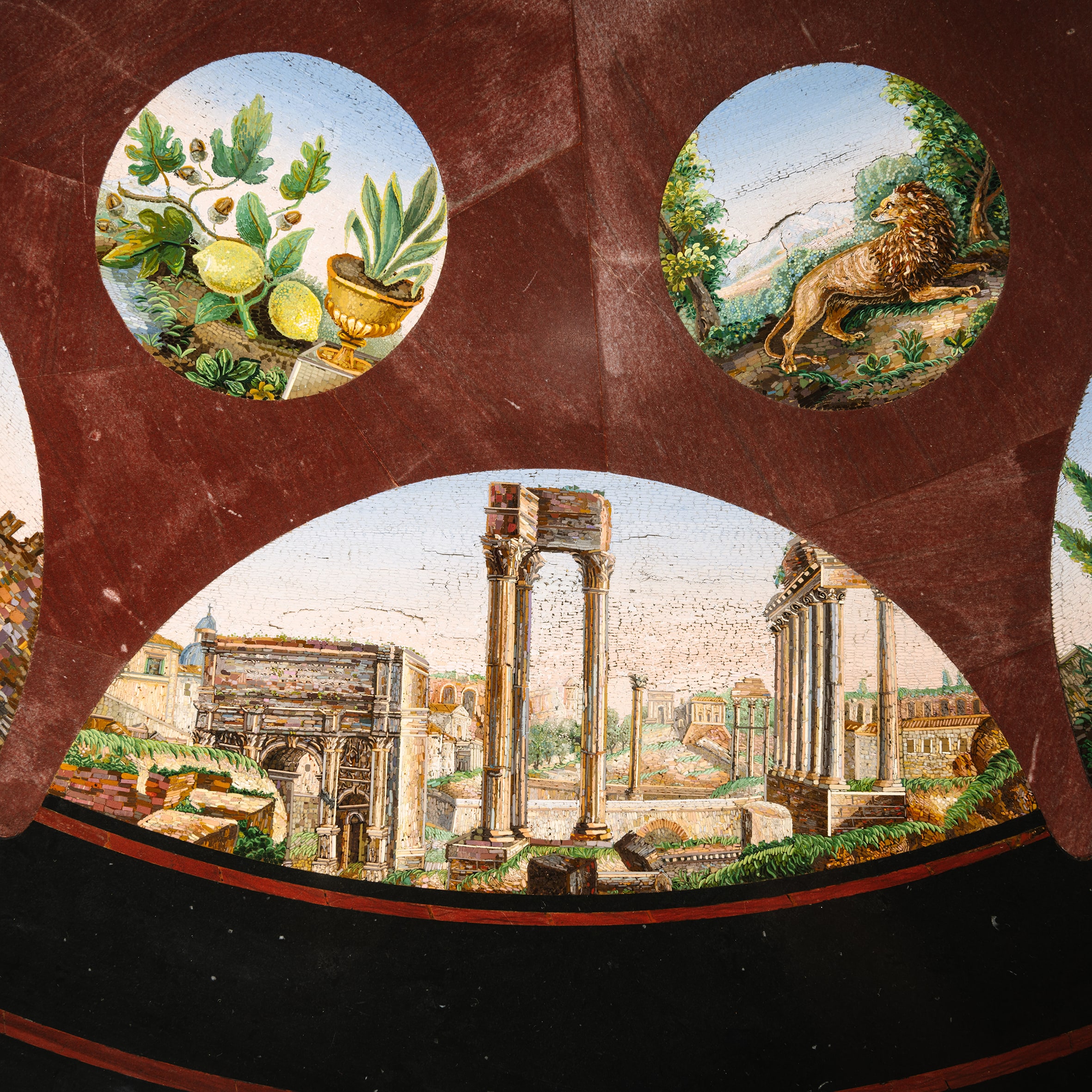
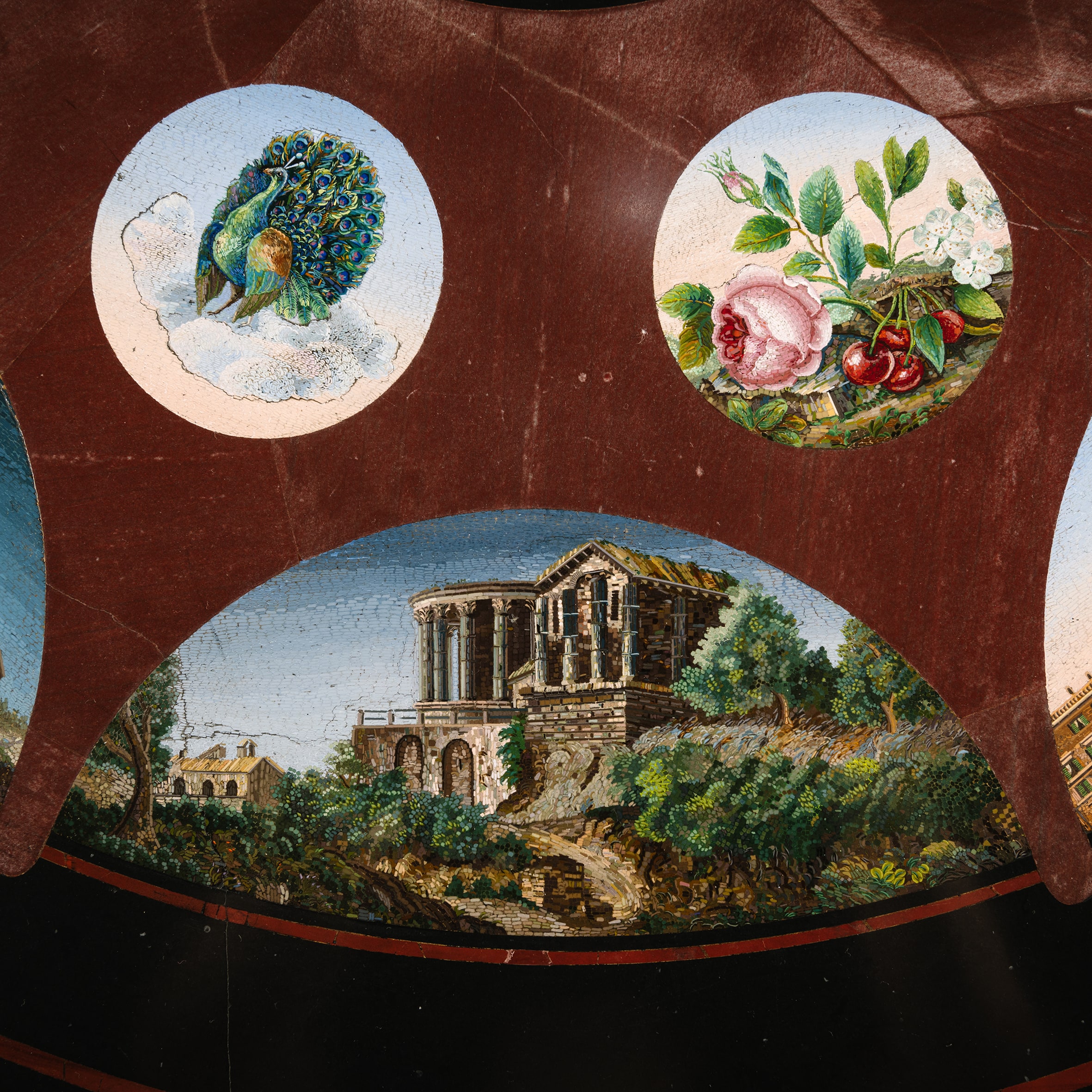
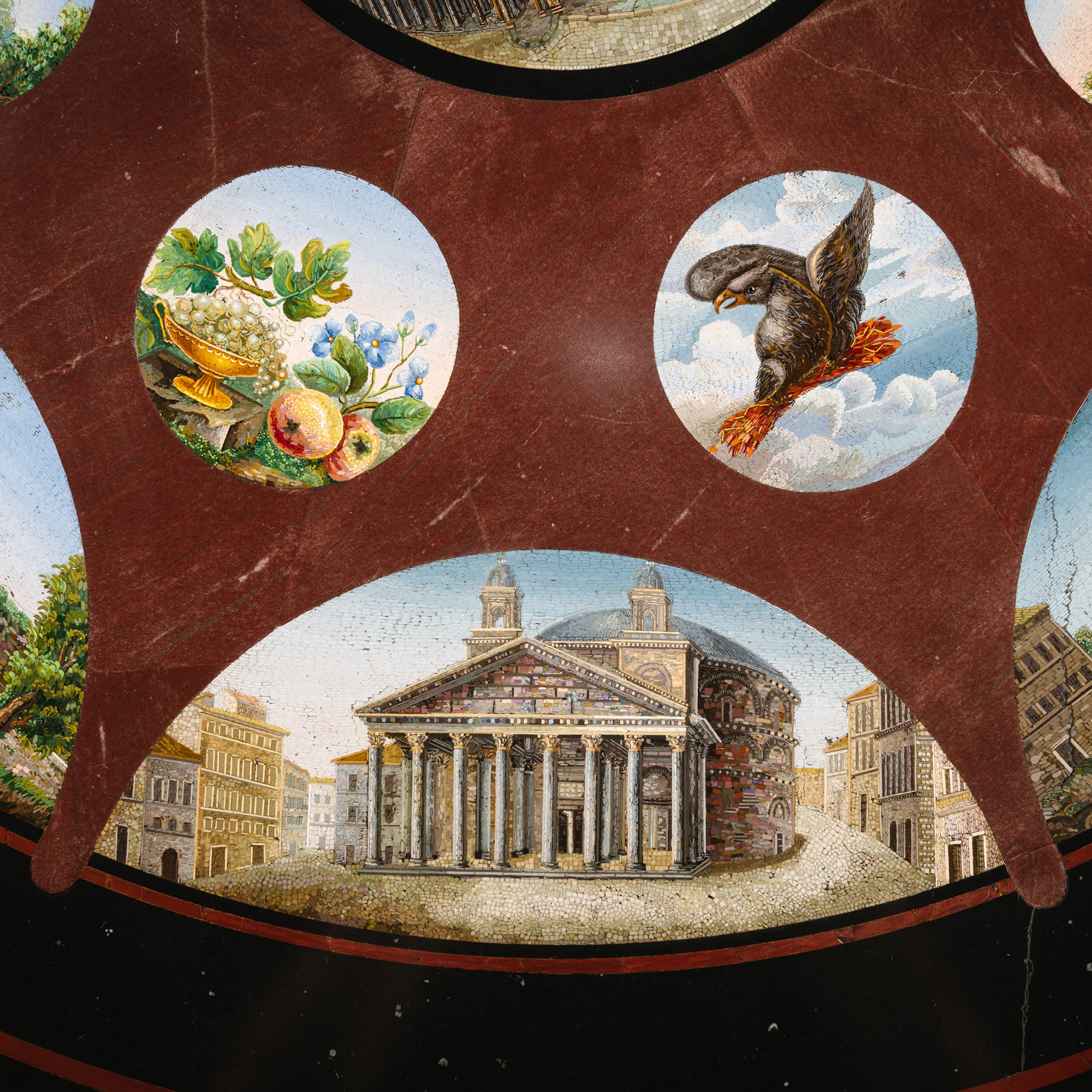
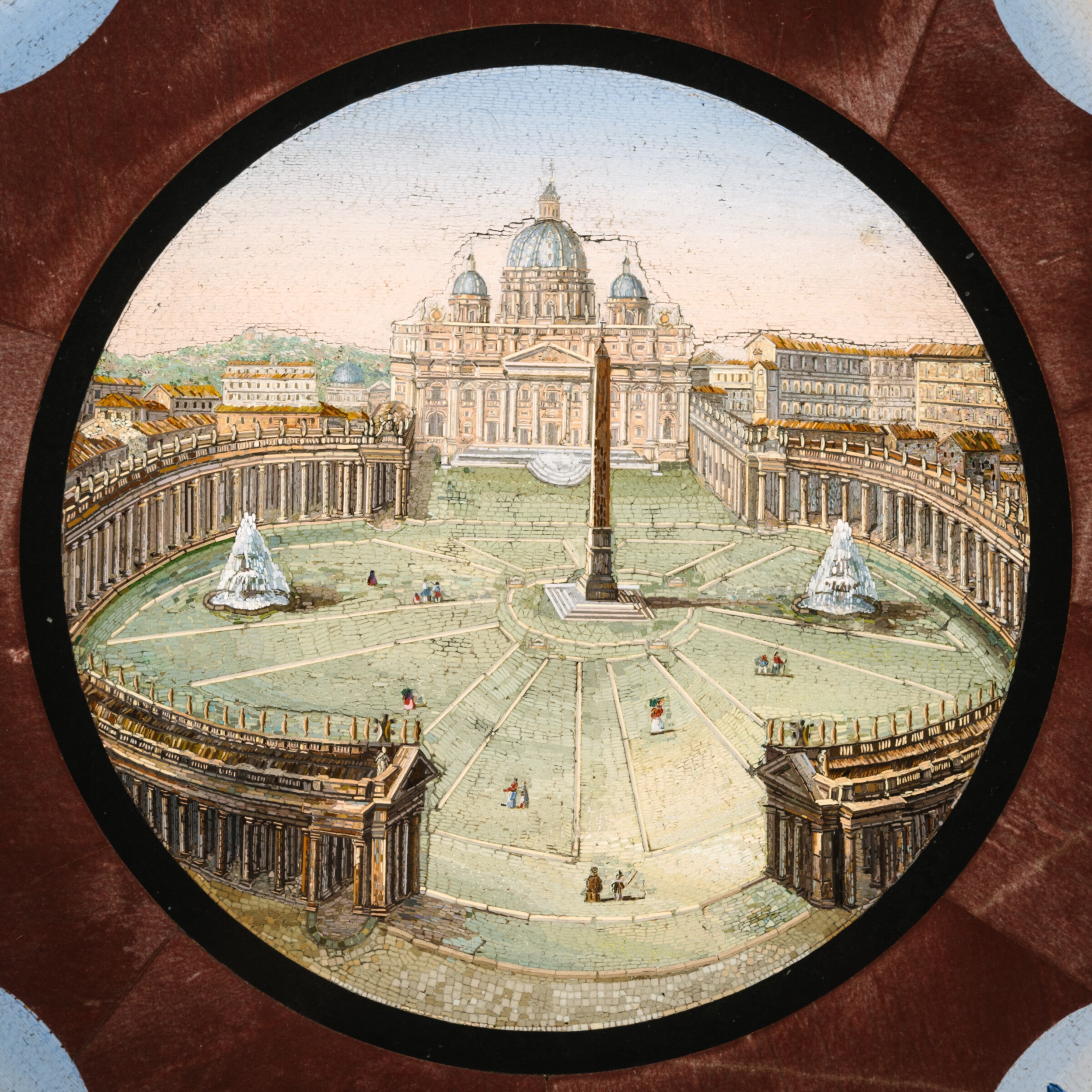
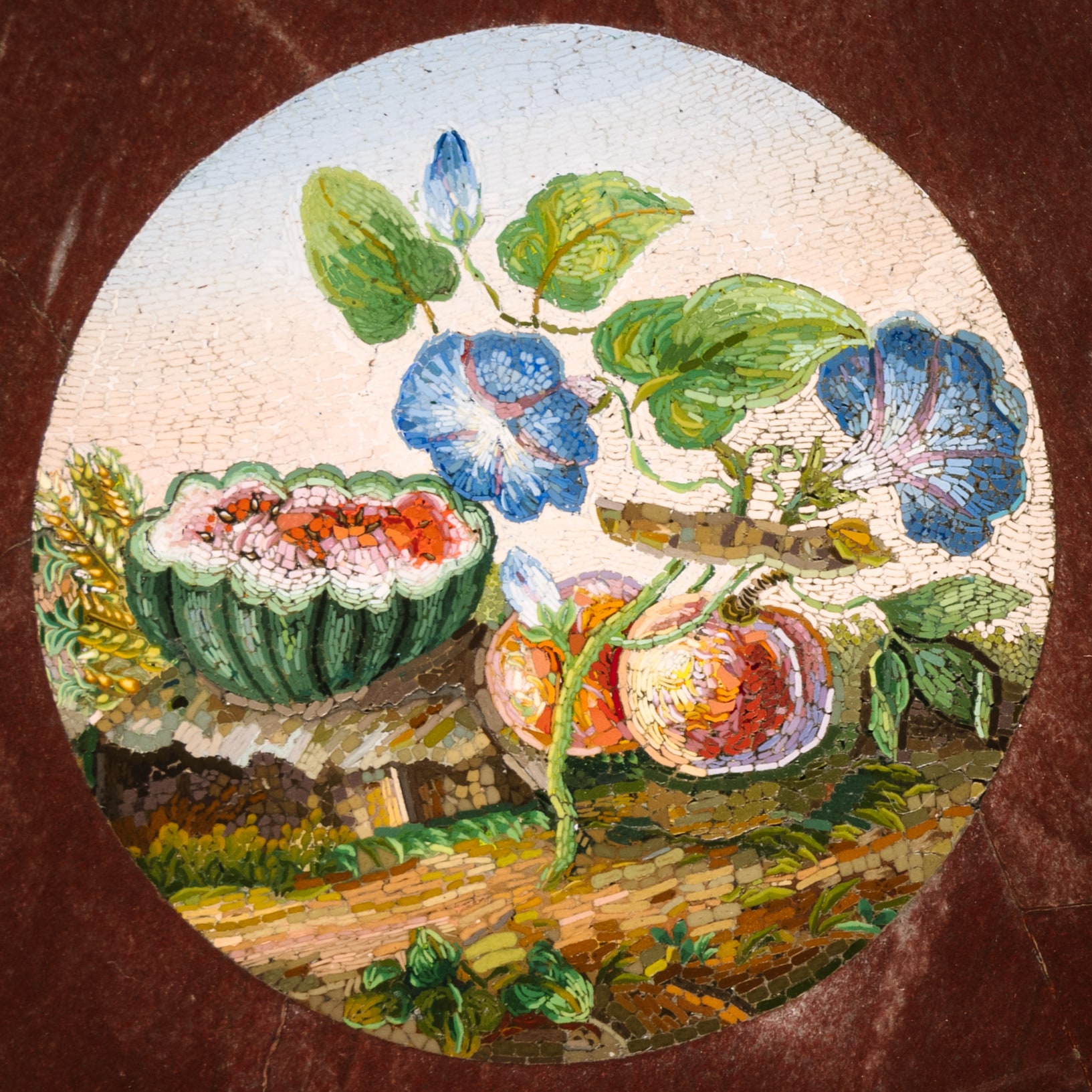
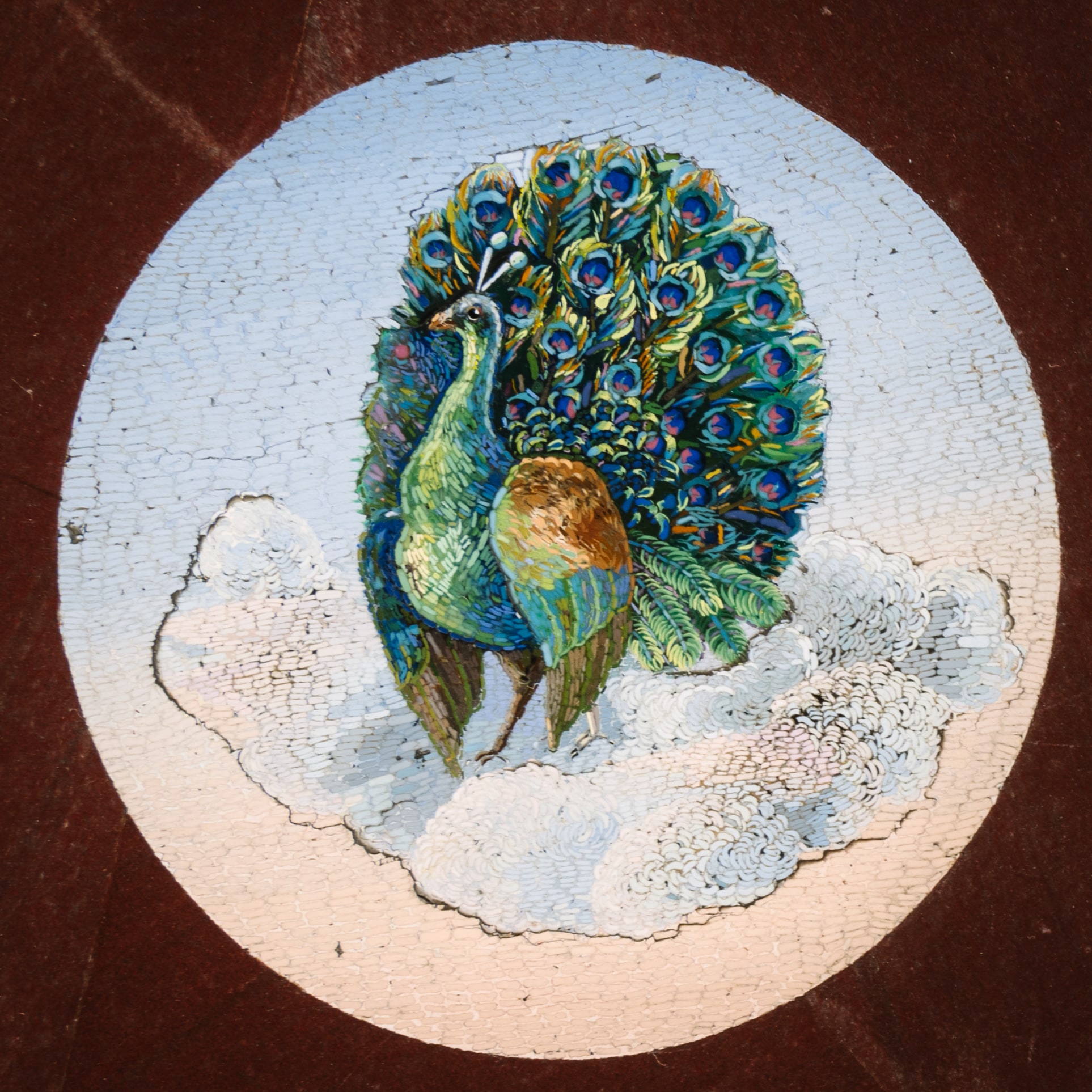
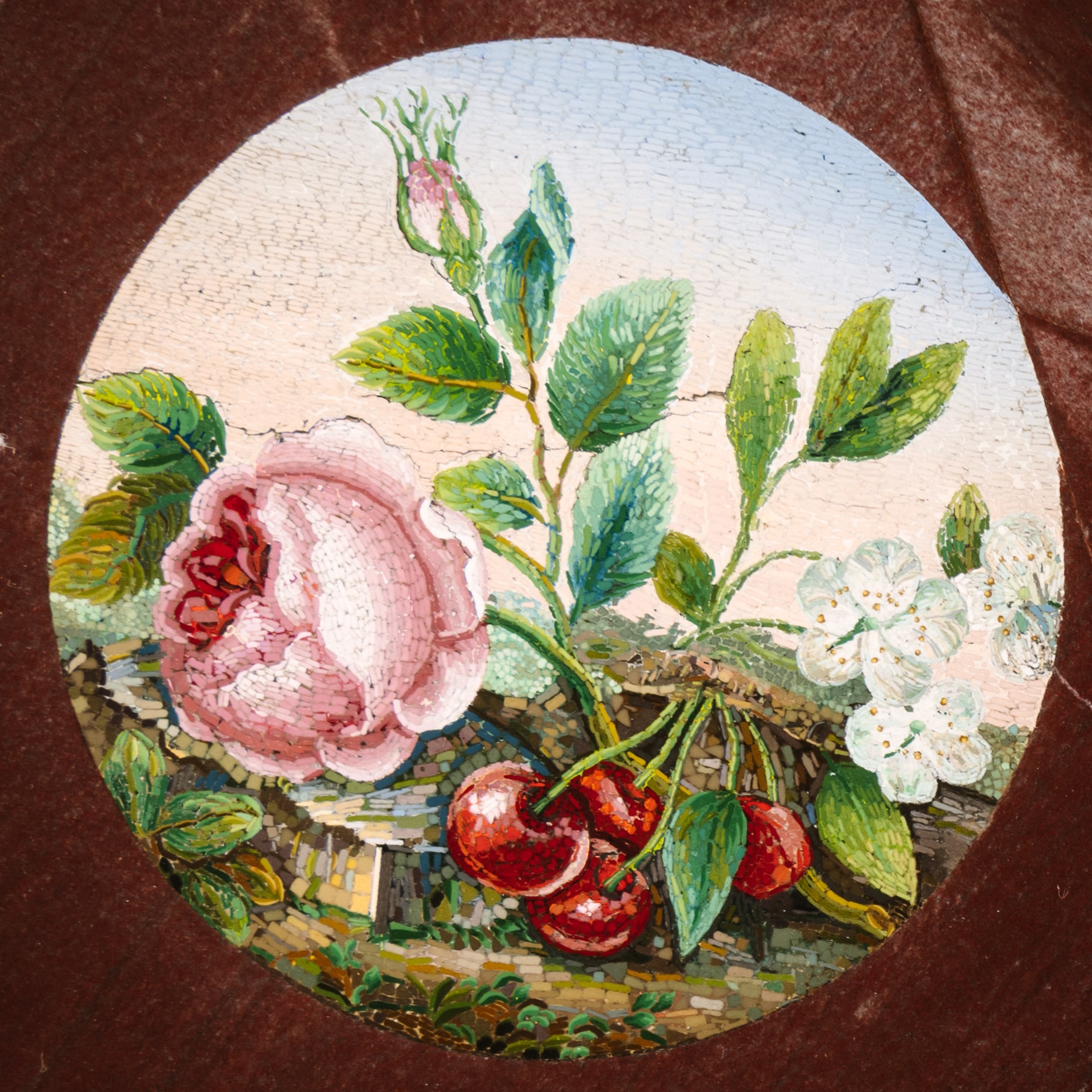
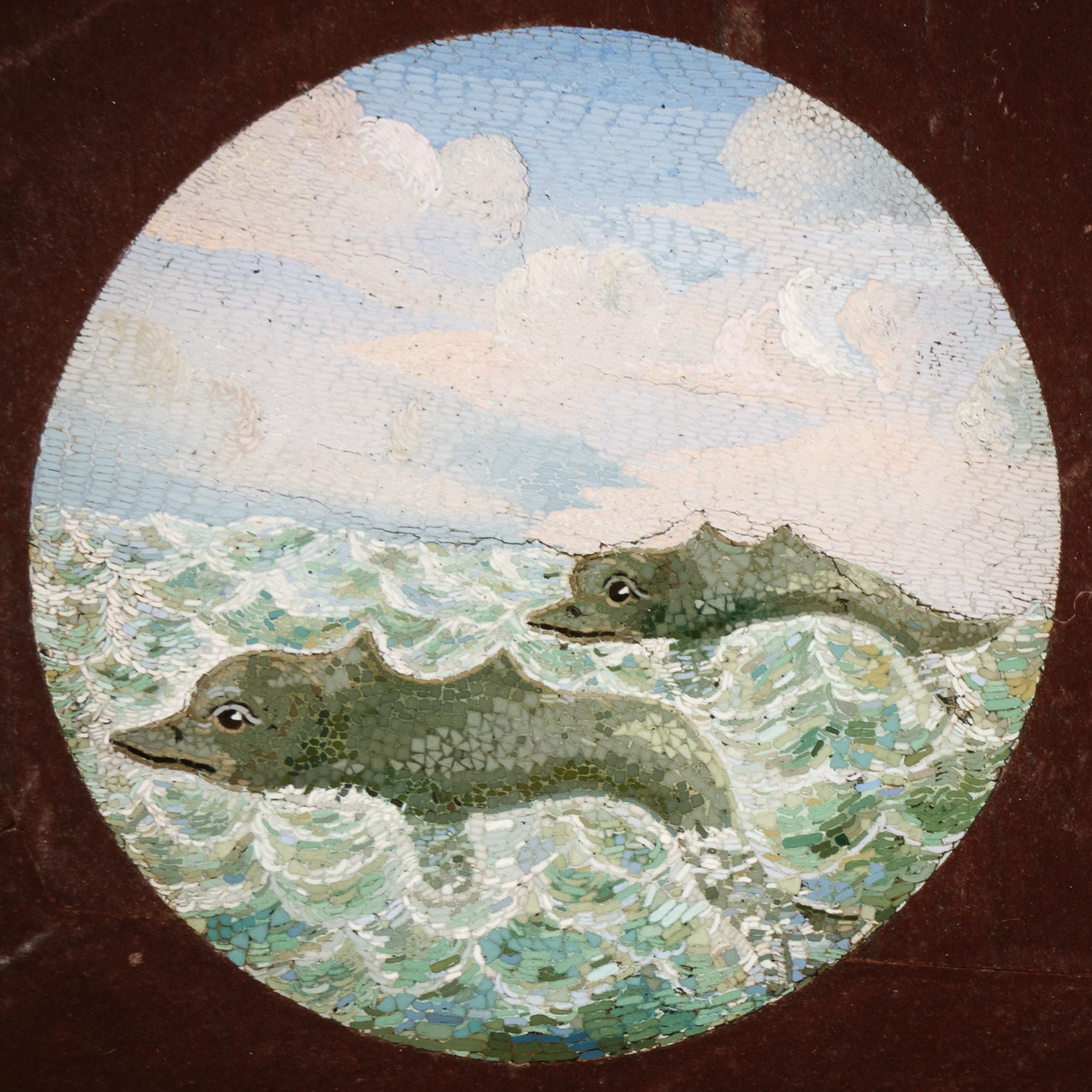
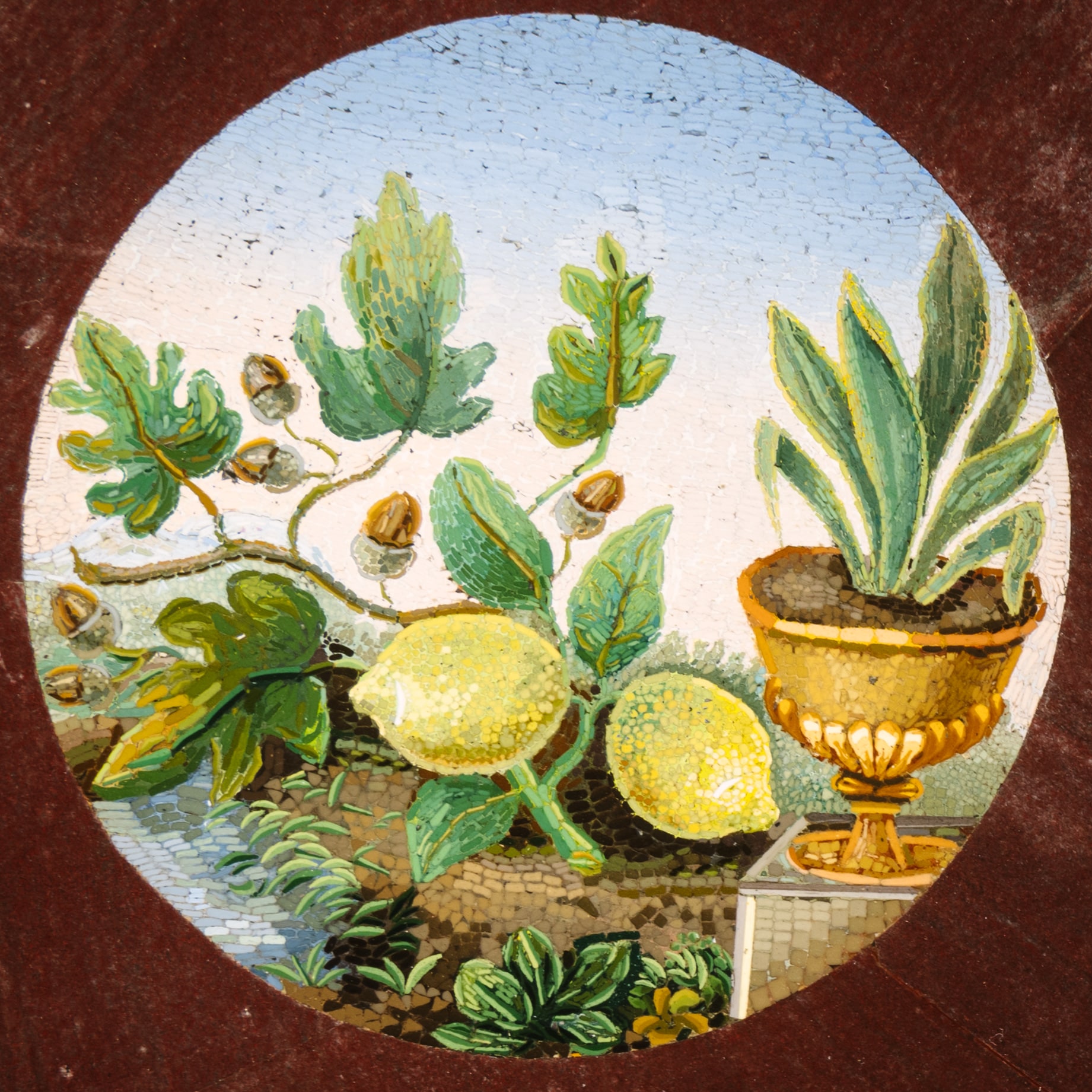
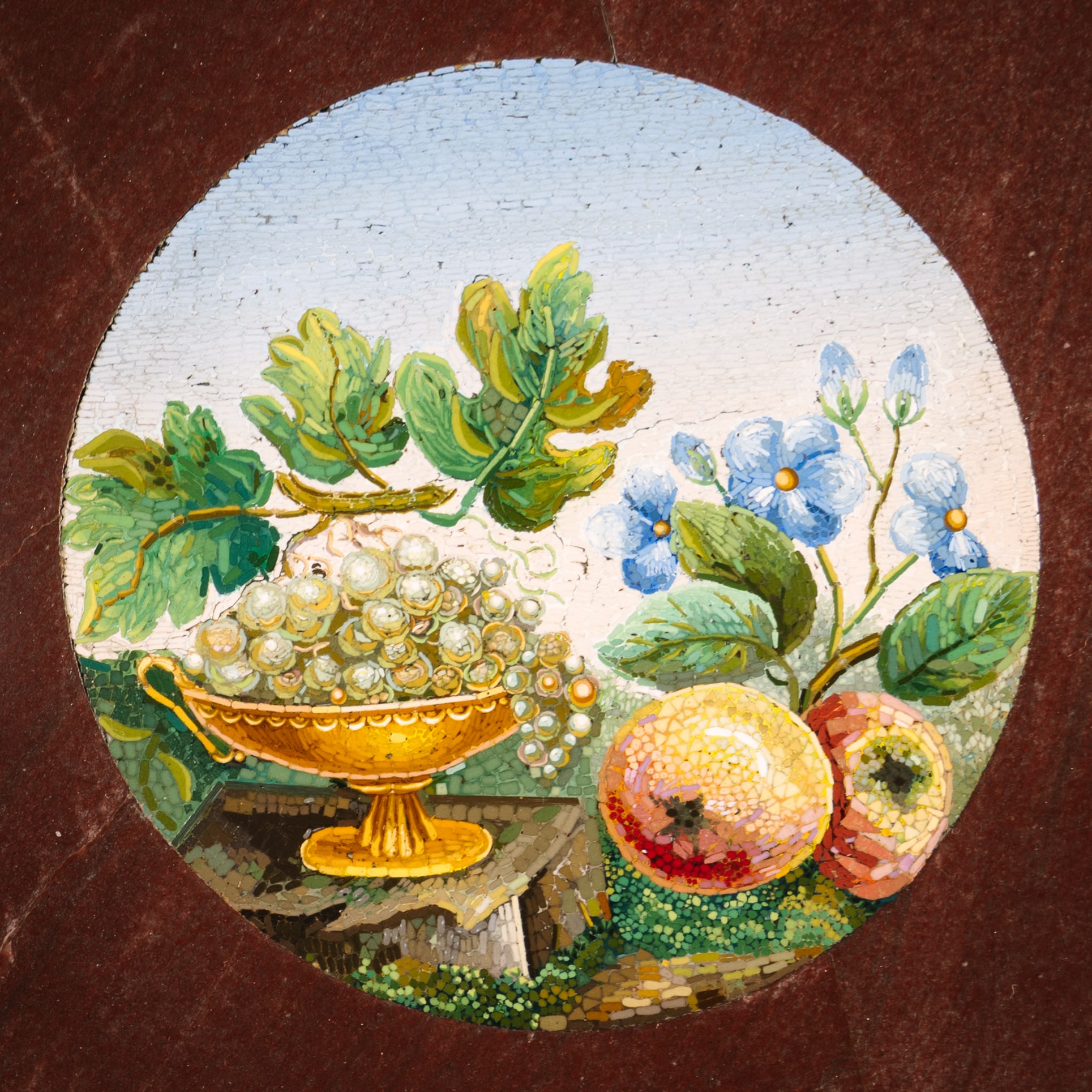
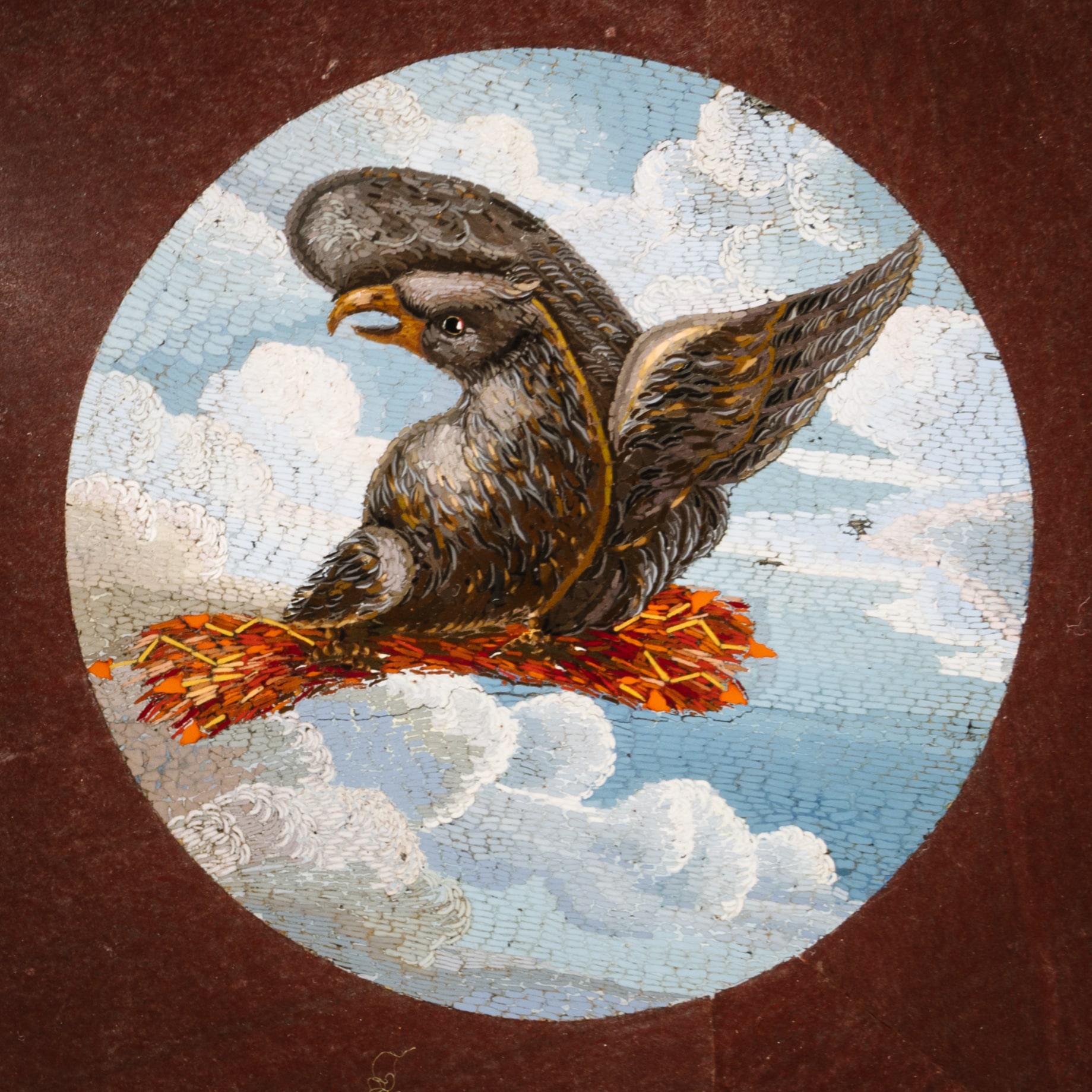
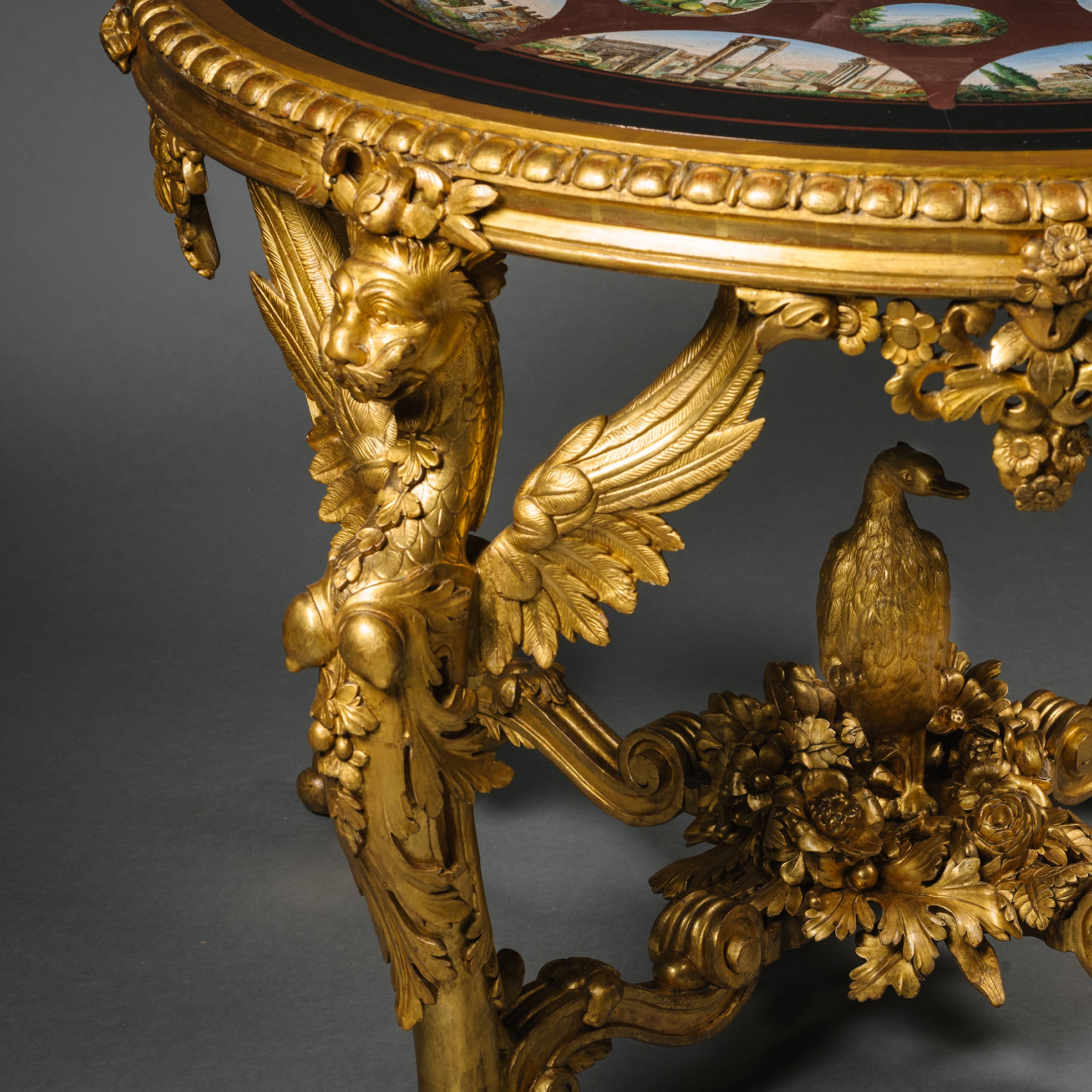
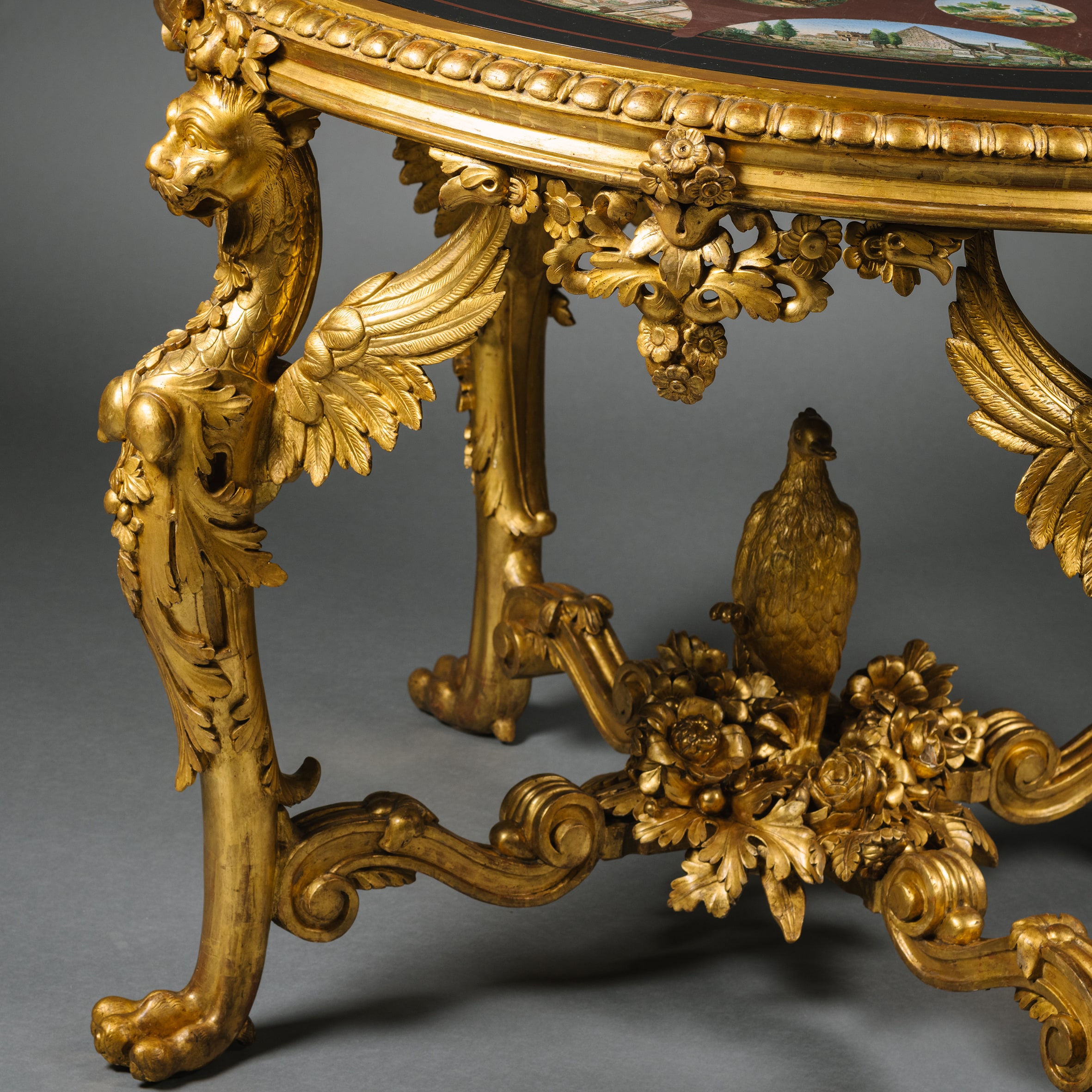

 طبع
طبع